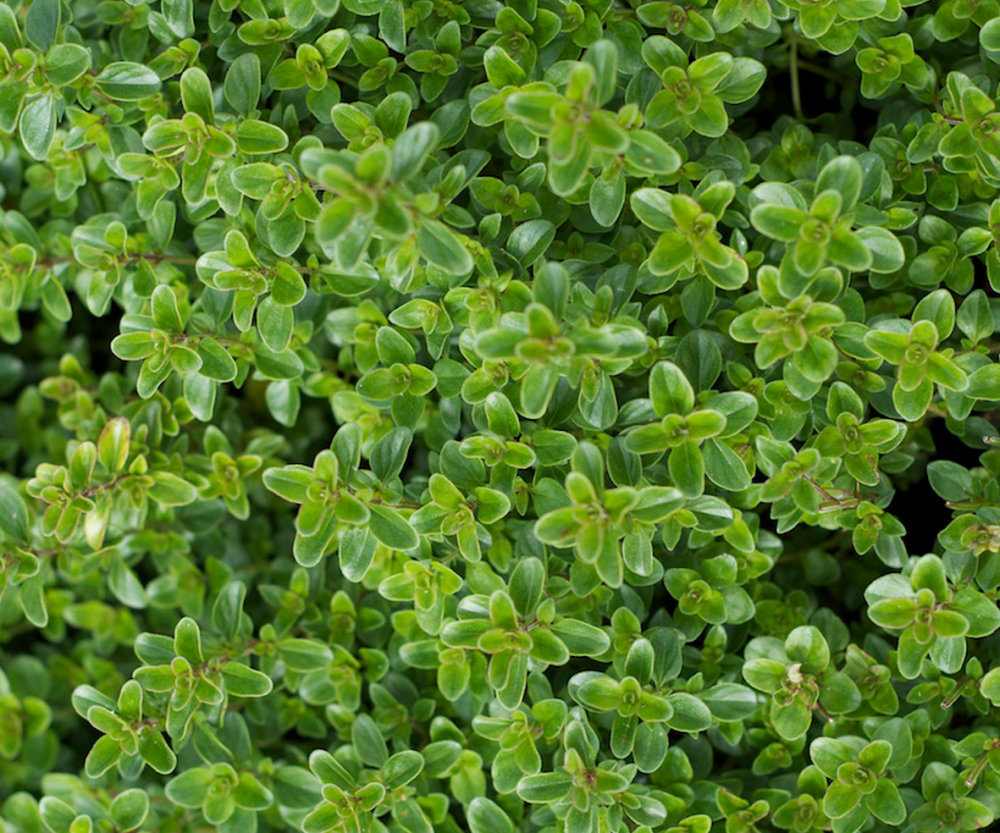
Seedlings should be thinned to a final spacing of 10–15 cm (4–6 in) allowing 20–25 cm (8–10 in) between rows. When planting seeds, they should be covered should be covered with a thin layer of soil to prevent them from drying out while they germinate.

Thyme can also be propagates from cuttings, air layering or by division of the roots. Thyme is propagated from seed and can be direct seeded or sown in a nursery to produce transplants.
#Thyme plant full
Thyme should be planted in alkaline soils and require full sunlight for optimum productivity. Thyme will grow best in well-draining, fertile sandy loam or sand. Thyme is tolerant of drought conditions but water-logged soil is detrimental to it’s survival and production. Established plants can survive temperatures down to -16☌ (3.2☏). Since thyme and thyme plants grow so well in variable well-draining soil, rock gardens and rock walls provide an ideal growing environment for these herbs.Thyme grows best in warm, sunny climates at temperatures between 4 and 28☌ (39.2–82.4☏) but will grow best at 16☌ (60.8☏). Walking over them will release a fragrant essence. Consider planting creeping thyme within a stone pathway or between pavers. Other: Certain thyme varieties are fantastic additions to more abstract planting areas.Mulching can help with moisture regulation, reduce soil erosion, regulate soil temperature and prevent pesky weeds from propagating in your garden. Backyard Garden: Thyme plants can be quickly and easily grown in a backyard garden as long as the soil is well tilled and drains well.You can control your garden’s soil quality in a raised garden bed, and plants and seeds will stay warmer earlier in the season than if they are planted in the ground. Raised Bed: Growing thyme in raised beds takes much of the guesswork out of supplying a nutrient-rich and well-draining soil for plants.It also allows you to have fresh herbs right outside on your porch or patio. Growing in pots and grow buckets offers gardeners the flexibility of moving plants to different locations as needed. Be sure that you have a nice large pot or growing container with a well-draining potting mix and water intermittently. Containers: Thyme plants can be grown successfully in containers.Thyme is an excellent option for growing in containers, raised garden beds, and in-ground backyard gardens. Transplant thyme seedling outdoors after all danger of frost has passed and when the soil reaches the 70 degree Fahrenheit mark.Thin seedlings to 12 to 24 inches apart.

Some varieties can take up to 200 days until they reach maturity! So, check seed packets carefully before starting seeds.

When growing thyme from seeds, you can start them indoors six to ten weeks before the last frost date in your grow zone. If you are determined to try, thyme can be sown from seed indoors, propagated from cuttings, or transplanted into the garden bed or container.

Many people opt to purchase plants from a garden center when growing thyme and thyme plants because this herb has an extended germination time, and success can be unpredictable.


 0 kommentar(er)
0 kommentar(er)
